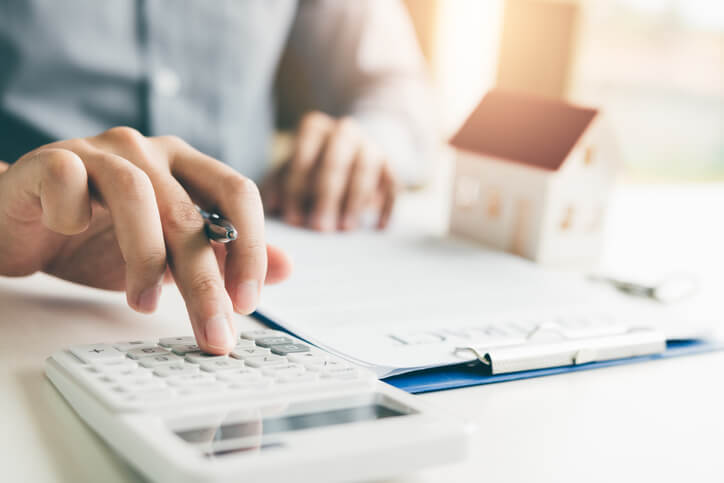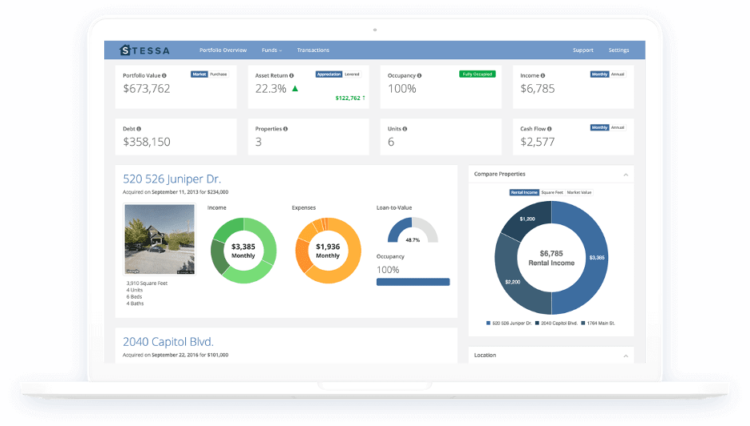The potential profitability of rental property varies from one home to the next. Investors who have unrealistic profit expectations may set themselves up for a big disappointment. On the other hand, investors who take the time to analyze cash flow and accurately calculate the potential profit from a rental property can be more successful in the long run.
In this article, we’ll explain how to calculate the potential profit from a rental, and help answer the question of what a good profit on a rental property could be for you.
What is Rental Property Profit?
The profit from a rental property is the actual cash you have left over at the end of each month.
It’s important to note that rental property profit is not the same thing as taxable net income. That’s because there are non-cash deductions such as depreciation that real estate investors use to reduce pre-tax income.
Real estate tax deductions are also one reason why some rental property investors are able to pay very little in taxes while having plenty of money in the bank.

How to Calculate Profit From a Rental Property
Most real estate investors make a profit from the cash flow a rental property generates. Cash flow is determined by a variety of factors, including:
- Property purchase price
- Mortgage payment (principal and interest)
- Gross rental income
- Vacancy rate
- Property management
- Operating expenses (such as repairs, maintenance, CapEx, and landscaping)
- Property taxes
Prepare a cash flow statement
Here’s what a very basic cash flow statement looks like to calculate potential cash profit from a rental property:
Property purchase price = $100,000
Down payment = $25,000
- Projected gross rental income = $900
- Vacancy loss at 5% = $45
- Effective gross income = $855
- Repairs at 5% = $45
- Property management at 8% = $72
- Other expenses (property tax, insurance, HOA, etc.) = $180
- Mortgage expense = (principle and interest only) = $320
- Projected monthly cash profit (pre tax) = $238
Use a pro forma
It’s a good idea to use a pro forma income statement to forecast and keep track of actual income and expenses. If you currently own a rental property, Stessa is a free online rental property financial management system that automatically tracks income and expenses.

How to Measure Rental Property Profits
There are four main ways to measure rental property profits. Monitoring each of these metrics on a regular basis can help keep the financial performance of your rental property on track and help ensure that your long-term financial goals are being met:
Cash Flow
Cash flow is the amount of money you have left over as profit at the end of each month after paying all of your operating expenses, including the mortgage.
It’s important to note that cash flow may not always be the same from one month to the next. Some months may have higher or lower repair expenses than others, or the property could be vacant longer than expected while you look for a qualified tenant.
Cap Rate
Capitalization rate (cap rate) is a ratio that compares the property’s annual net operating income (NOI) to the property purchase price. NOI does not include the monthly mortgage payment, because different investors use different amounts of leverage (resulting in higher or lower mortgage payments).
In general, the higher the cap rate is the more profitable an investment could be because there is more income generated relative to the property purchase price. Because cap rates differ from one market to the next, the cap rate calculation should only be used to compare similar properties in the same market or submarket.
Based on the data from the cash flow statement above, the cap rate is calculated like this:
- NOI = $238 monthly cash profit + $320 mortgage payment (added back in to calculate NOI) = $558 per month x 12 months = $6,696 annual NOI
- $6,696 NOI / $100,000 Property price = 0.067 or 6.7% cap rate
Cash on Cash Return
Cash on cash return is a ratio that compares the annual cash returned from an investment to the amount of cash invested. Unlike cap rate, the cash on cash return calculation includes the mortgage payment debt service.
If an investor makes a $25,000 down payment and generates a cash profit of $2,856 per year, the cash on cash return is 11.4%:
- $2,856 annual cash return / $25,000 down payment = 0.114 or 11.4%
ROI
Return on investment (ROI) compares the total cash returned to the total amount of cash invested:
- ROI = Gain on Investment – Cost of Investment / Cost of Investment
Let’s look at how to calculate ROI. Note that in the real world, gross rental income and operating expenses would change from one year to the next, but for the purposes of this example we’ll assume they remain the same.
After purchasing the property for $100,000 using a $25,000 down payment the home is sold five years later for $150,000. During the 5-year holding period the cash returned was $14,280 from the net cash profits from renting the property ($238 per month x 12 months x 5 years) + the $50,000 gain made when the home was sold.
The ROI is:
- ($14,280 rental net cash profits + $50,000 gain on sale) / $25,000 down payment = 20.79% annualized ROI
Have existing properties that you want to track the performance of? Check out Stessa. Get 24/7 visibility into your portfolio’s performance with reports that are automatically generated and updated in real time. Create income statements, balance sheets, cash flow reports, and more, in just a couple clicks. Best of all, it’s free.

What is a Good Rental Property Profit?
There’s no right or wrong answer to this question, because a good profit for one real estate investor may be terrible for another. However, there are a few things to think about to help determine what a good rental property profit might be for you.
Alternative Investment Choices
One factor to consider is what your investment options are. Common choices for investing are CDs, bonds, stocks, precious metals, real estate, and for some people Bitcoin.
For each of these assets, your return will vary based on how much the asset value increases (or decreases) during the time you hold the investment due to factors such as inflation or changes in the marketplace.
Passive Income Potential
Another thing to think about is whether or not the investment offers the potential for recurring income. Some bonds and stocks pay dividends, rental real estate can generate regular passive monthly income through rent payments, and cryptocurrency can generate a return if you lend it out on an exchange.
Return on Investment
At the end of the day, you need to ask yourself if the profit from the rental property is worth it.
Some investors use a benchmark of $100 per month per property. That’s not enough money to get rich off of, but incremental cash flow like this can go a long way toward building your wealth over time, especially if the property value also increases over the long term.
While there’s no guarantee that home prices will keep going up, the median sales prices of houses sold in the United States have increased by over 66% since the last recession in 2008/2009, according to the Federal Reserve.
On the other hand, the median sales price of houses also went down by nearly 24% between Q1 2007 and Q1 2009. Short term investors who purchased at the top of the market and sold when the market temporarily moved down lost money.
Risk Factors to Consider
While rental property offers the potential for generating profits through recurring income, appreciation in property value, and tax benefits, there are also some risk factors to consider as well.
For example, the heating and air conditioning system could break down and require an expensive repair. Or, the city could repave the road in front of your house and levy a special assessment. Insurance premiums can go up if there is a natural disaster, and property taxes can take a big bite out of your potential profits.
Because of these risk variables, it’s always a good idea to have cash in reserve when you invest in real estate. Investors who plan on having the rental income cover all of the expenses all of the time may be surprised when everything doesn’t go according to plan.

How to Evaluate a Rental Property Investment
The potential for profit varies from one rental property to another. There are several things to keep in mind when you evaluate a rental property investment:
- Location: Homes located in areas where population and job growth are strong generally make better investments than houses in cities where the unemployment rate is high.
- Condition: Older homes can require more repairs and maintenance than newer construction, so be sure to calculate these potential costs when making an offer on the property.
- Return: Some investors place more value on potential appreciation instead of recurring income, and are comfortable purchasing property in markets where cap rates are low. Others seek a more balanced blend of recurring passive income combined with a gradual potential appreciation in property value over the long term.
- LTV: Loan-to-value compares the size of the loan to the property value. Investors who use a low down payment and a high amount of leverage have larger mortgage payments. A high LTV creates the risk of owning a property with negative cash flow if expenses are more than expected or vacancy rates are higher than anticipated.






